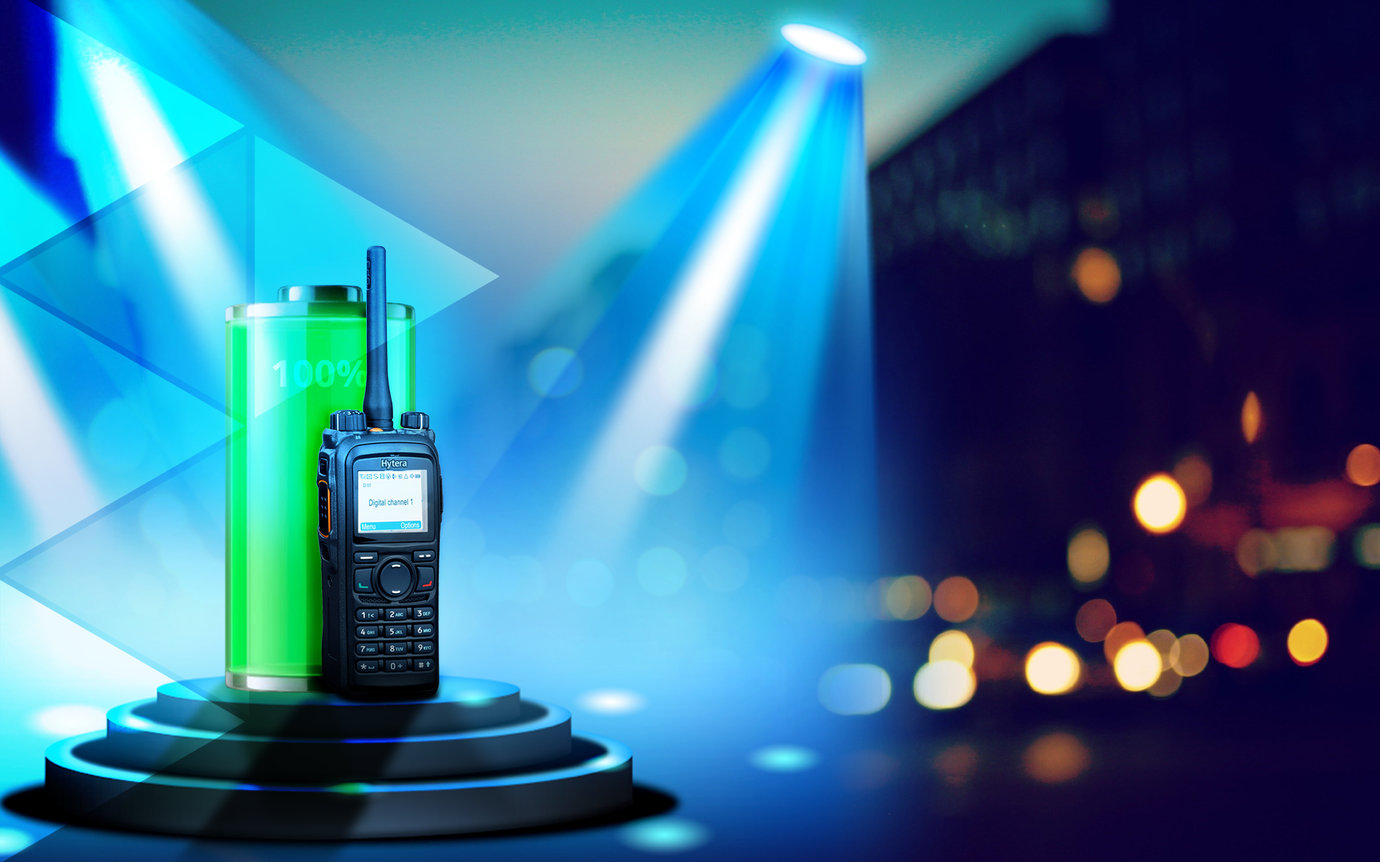Two-way radios and battery life
Many businesses rely on two-way radio communication, both for workforce efficiency and safety. Battery life is therefore critical. The last thing you want is for workers to lose communication, when carrying out vital operations. In order to keep communication flowing, it can help to understand transmission cycles, battery types, and how to look after your batteries. We take a closer look at battery life.

The 5-5-90% cycle
In the radio communications industry, we talk about radios being on a specific cycle. It’s called the 5-5-90% cycle time assumption. This basically means that when you use a radio, 5% of your time is spent transmitting, 5% receiving and 90% on standby. When you use a mobile phone and someone calls you, you are always talking and listening, whereas with a radio, on some occasions you may only be doing one of these things.
For examples, you might need to listen to instructions given by a team leader but not have to reply or respond to these instructions. Or you may just need to speak occasionally on your radio to give updates to your team as to what is going on, without needing a reply.
By using this system on a radio, and not always having to simultaneously talk and listen, you save battery. Mobile phone struggle to compete with radios when it comes to battery life. If a user goes over the 5-5-90 cycle time, then a two-way radio with a higher capacity battery may be needed. Mobile phones only really have two states, in call or on standby (in use or not in use). However, radios have three states, in-use where it’s transmitting, receiving a call or on standby.
How long do two-way radio batteries last?
On average most two-way radio batteries will last around 18 to 24 months, depending on the quality of the battery and how you use your radio. Your rechargeable batteries can be charged and used over and over again.
If you are wondering how long batteries will last until they need to be recharged, then it does depend a lot on how much you are using your radio, and which type of radio you have. However, the average radio would last around a day with normal use.
Most two-way radios, if used moderately, will easily last an eight hour shift. If you need your radio to last should you have to work overtime, then you will need to consider different battery sizes and types.
Most businesses operating in normal working hours will be able to use standard two-way radio without experiencing issues. However, if your staff work longer shift patterns, you may want to consider more advanced radios with increased battery capacity.
DMR and Battery Life
In the past, two way radio battery life could only be increased by using larger batteries or lower power technologies. DMR now offers increased battery life using two slot TDMA (Time division multiple access) technology.
DMR radios transmit on one of two available timeslots, or half the time of a conventional analogue transmission. This allows them to deliver a battery life up to 40% longer than the analogue equivalent on a single charge.
Lithium-ion Technology
Lithium-ion battery technology offers an increased talk time per charge. This allows them to be used continuously for up to 14 hours.
To discover how Lithium-ion batteries helped improve battery life at English Heritage, view our recent case study.
Looking after your batteries
There are many ways you can help your batteries to last longer. For example, only using your radio to communicate when necessary and storing your batteries in a cool, dry place If you leave your batteries in a very hot or very cold environment, it can significantly reduce their battery life. Overcharging your radio can also reduce battery life.
If you have any questions about battery life, or other handset specifications and features, why not speak to one of our experienced advisors? We can help you find the right two way radio solution for your business.
7 December 2016

